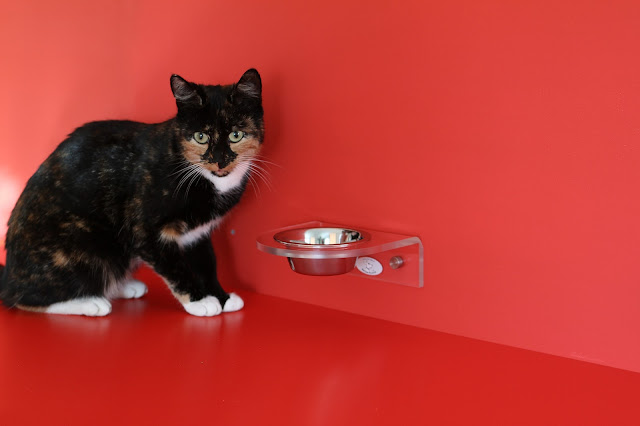Feline parchedness happens when there is over the top liquid misfortune from the feline's body. At the point when this happens, it's not simply water misfortune. It is likewise a deficiency of a few fundamental minerals in their body like chloride, sodium, and potassium.
Water is vital for your feline's wellbeing. It assists it with keeping up with great wellbeing and supplants the liquids that they lose through their pee and dung. Water is likewise vital for your feline's course, processing, and waste expulsion. In the event that drying out is left untreated in your feline, the condition can prompt other extreme clinical worries.
What Causes Dehydration in Cats?
Parchedness in felines is commonly brought about by the feline not drinking sufficient water or by unnecessary water misfortune. Felines can likewise lose dampness just barely through their paws however this doesn't typically cause extreme water misfortune. Parchedness could be achieved by various elements like:
- Diabetes
- Looseness of the bowels
- Fever
- Heatstroke
- Blistering climate or overheating
- Injury
- Spewing
To assist your feline with keeping up with sound hydration, guarantee that they can constantly get to new water in a spotless bowl consistently.
How Much Water Does My Cat Need?
Your feline requirements a day to day measure of around 3.5 to 4.5 ounces of water per 5 pounds of their body weight. For example, in the event that you have a 10-pound feline, they ought to drink between 7 to 9 ounces of water everyday.
Assuming that the feline eats wet food frequently, you might see that it doesn't hydrate. That is on the grounds that the feline is drinking water when they eat. Wet food is made of up to 80% water.
Felines who fundamentally eat dry food, then again, will not polish off as much water from their food. They need to get hydrated by drinking from their water dish.
What Are the General Symptoms of Dehydration in Cats?
Ensure that your feline is getting sufficient water as a piece of their day to day diet. In the event that the feline isn't getting sufficient water, they might become dried out.
A few indications of parchedness in felines include:
- Loss of energy
- Gasping
- Refusal to eat
- Depressed eyes
- Cheap and dry gums
'Skin rising' is a decent test to assist you with deciding whether your feline is dried out. To do this, tenderly take a little part of your feline's skin around their shoulders, pull it up, and afterward let go.
Assuming that your feline is hydrated, the skin will adjust back properly rapidly. In the event that the skin falls down leisurely, this your feline could get dried out. In the event that your feline's skin stays up in a tent position and doesn't fall down, it very well may be an indication of serious parchedness. In cases like this, you ought to look for clinical consideration for your feline immediately.
How Should I Respond Assuming My Cat Is Dehydrated?
Drying out is many times an indication of a serious basic ailment in felines. Assuming you suspect that your feline is got dried out, contact your veterinarian for help immediately.
- Meanwhile you can attempt a few home solutions for rehydrate your feline:
- Add a limited quantity of chicken stock or fish juice to their water.
- Rather than dry food, take a stab at giving them wet food.
- Place some ice blocks in their water bowl.
You should get to know your feline's food and water inclinations. For example, a few felines like drinking water from a water dish while some like utilizing a feline wellspring. You need to attempt to urge them to drink. In any case, you ought to never compel them.
Are Certain Cats Prone to Dehydration?
By and large, felines that have been determined to have another sickness and more established felines are more inclined to drying out.
For example, assuming that your feline is encountering disease, diabetes, hyperthyroidism, or kidney problem, it is useful to talk with your veterinarian about how to keep up with solid and ideal hydration levels for your feline.
How Is Dehydration Treated?
A speedy strategy your veterinarian can perform includes them giving the feline liquids under the skin. In serious cases, your veterinarian can suggest hospitalizing your feline and giving them liquids through a needle that goes straightforwardly into the feline's vein. This strategy can generally rehydrate your feline inside a couple of hours or days.
Your veterinarian will likewise analyze the basic justification for your feline's parchedness and assist you with nursing them back to wellbeing.
How Might I Prevent Dehydration In My Cat?
There are a couple of ways that you can assist with forestalling lack of hydration in your feline. A few choices include:
- Clear out and give new water in water bowls consistently.
- Give numerous perfect water sources around your home for the feline to drink from.
- Have a go at giving your feline an electrolyte supplement or meat-enhanced water from a believed pet food store.
- Utilize a feline drinking fountain with new water to urge them to drink.
Assuming that your feline gives off an impression of being dried out or appears to be reluctant to drink, it's critical to move them to the vet immediately. Drying out in felines can prompt a few serious clinical worries that ought to be tended to as quickly as time permits.







.png)

.png)
.png)
.png)










